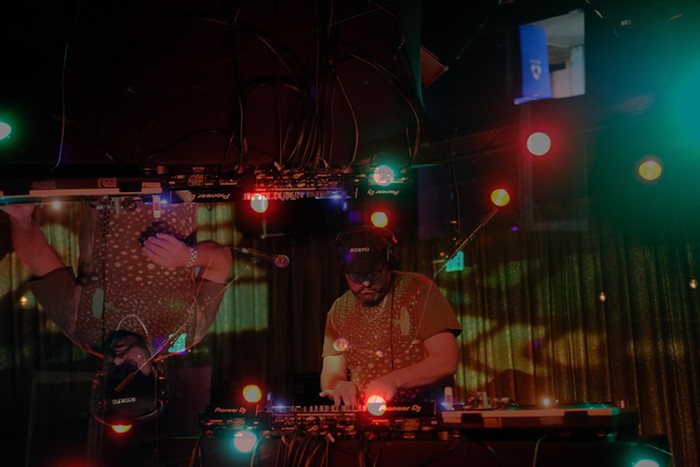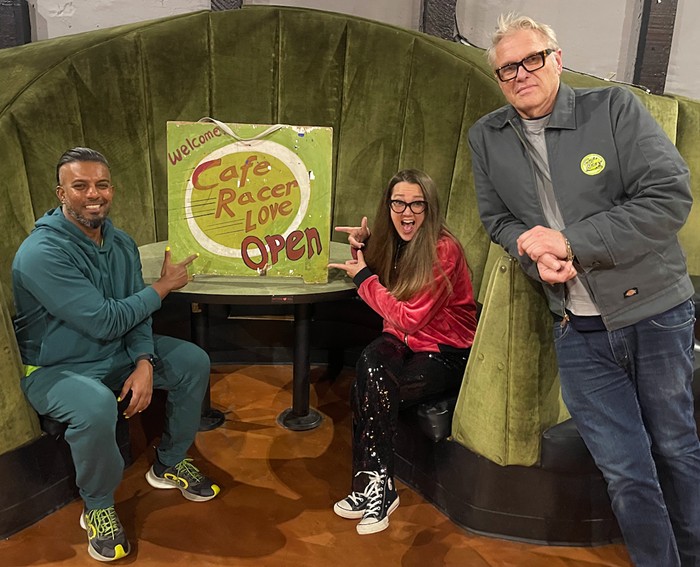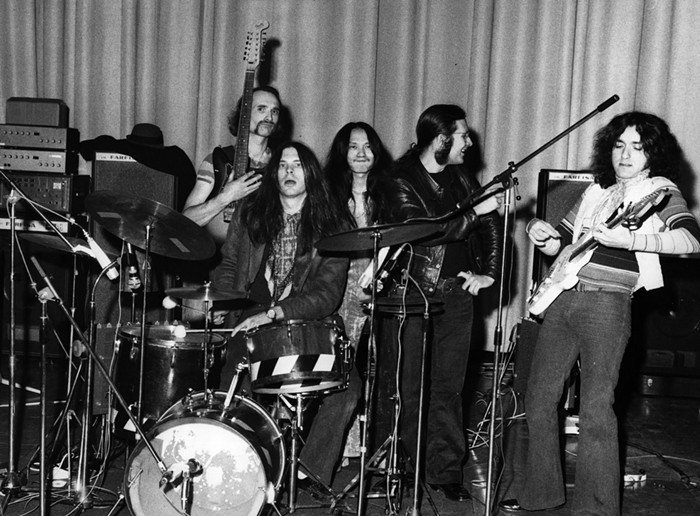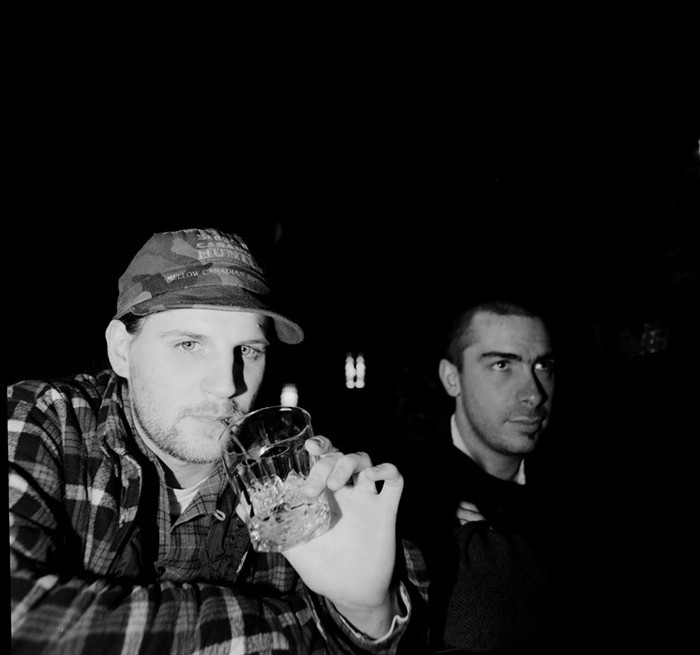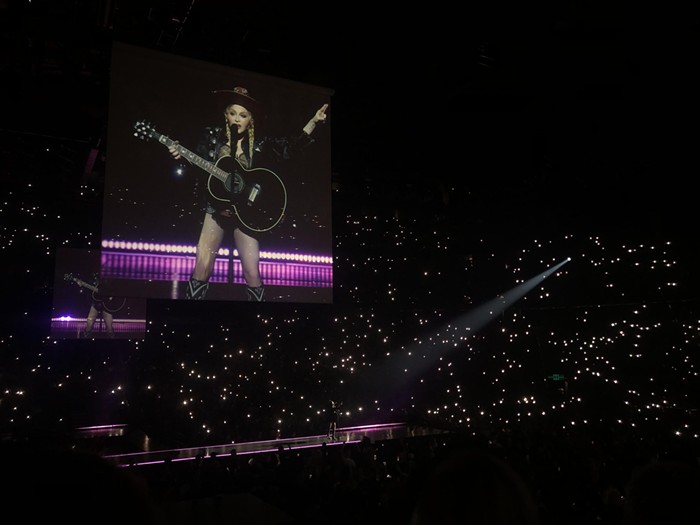"We cannot not periodize," wrote the American culture critic Fredric Jameson. We cannot not agree with this assertion, which has guided my writing on local hiphop for the past decade. The 35 years of beat production, rapping, dancing, and art must be organized into clear blocks of time. Rappers like Geo from Blue Scholars are in the habit of playfully mocking the way I periodize post-Sir-Mix-A-Lot 206 hiphop into waves. For example, Silent Lambs Project, Black Anger, and Source of Labor are part of the first wave (1993–2002); Framework, Macklemore, and Abyssinian Creole are in the second (2003–2007); Kingdom Crumbs, Mad Rad, and THEESatisfaction are in the third (2008–2013); and so on.
This kind of organization helps capture a sense of the evolving spirit of local hiphop but also makes the scene's growth intelligible. And it is this intelligibility that is badly missing in the Museum of History & Industry's exhibition The Legacy of Seattle Hip-Hop.
Curated by Jazmyn Scott and Aaron Walker-Loud, the show suffers from being a blooming confusion of images, bits of facts, snippets of interviews, flyers, old-school boom boxes, samplers, mixing equipment, and so much else. It's really hard to figure out where all of it begins and ends, and how all of it came together to form one of the most vibrant hiphop communities on the West Coast. The moment you enter, you are faced with a street-sized work of graffiti art. We are informed by a display label that it's by one "SPECSWIZARD," who has been making art and beats since 1978. (There is also sped-up video of the artist making the work.) Though it's a nice image, this is a strange way to open an exhibit about Seattle, which has always been far more about the MC, and more recently the producer, than the graffiti artist. The art and music, which plays on the video, seem unrepresentative, floating in the room like a balloon held to the ground by the thinnest of strings.
SPECSWIZARD, who is also known as Specs One, may have begun in the late-1970s, but his art, and particularly his music, which is what he's mostly known for in the area, came alive in the 1990s. In my scheme of things, he is classified as first wave (though he did make a big mark as a second waver in 2004 with Return of the Artist, and his low-tech style inspired the defining sounds and science-fiction themes of the third wave).
The section dedicated to the history of 206 hiphop (it's on the left side of the entrance) is a bit of a mess—none of the pictures, video footage, magazine covers, and memorabilia obviously match the information on the display cards. Though I'm familiar with the scene, I found the presentation of the history hard to follow. I also stared at the cover of a Billboard magazine that featured a woman called Shakira. (Was she from Seattle? I was mystified.) I looked at the cover text: a story about Quentin Tarantino, a story about Third Eye Blind, and then, finally, a story about the rapper Grynch, who is known in our scene for a local hit, "My Volvo," which is arguably the "My Hooptie" (by Sir Mix-A-Lot) of its moment (which in my scheme is second-to-third wave). How hard would it have been to make this jumble a bit more focused?
If the curators are assuming that people walk into the exhibit knowing jack, they fail to present a very thorough picture of the scene they're depicting. If, however, they're trying to cater to people who know a thing or two about Seattle hiphop, they're in even worse trouble.
Scott and Walker-Loud have organized the exhibit into sections that represent hiphop's five elements: rapping, producing/DJing, dancing, art, and fashion. (This order, by the way, is not universally accepted; many, such as myself, exclude fashion.) The cost of ordering the exhibit into a synchronic, rather than diachronic, show is that only through time can one see, hear, and discover the evolution of an art form, see precisely what has changed, see how these changes are responding to developments in technology or economics.
For example, the Massive Monkees (a local breakdance crew that achieved world-class fame in 2004) are not the same as the breakdancers of the 1980s in many ways. For one, those in the 1980s were much more like robots and had a Cold War–era preoccupation with space travel (listen to Keymatic's "Breakin' in Space," 1984). The dancers in Massive Monkees, on the other hand, have a super-fluid style that recalls the promised wonders of bioengineering. This exhibit lumps them together, as if "breakdancing" were just a single, undifferentiated commodity, rather than a dynamic form that has evolved, and continues to evolve, with the music that scores it.
It's admirable that a local museum would put together a show dedicated to a local art movement that has been historically overlooked, despite its cultural importance. In that sense, The Legacy of Seattle Hip-Hop is worth seeing. Maybe next time they'll get it right. ![]()


